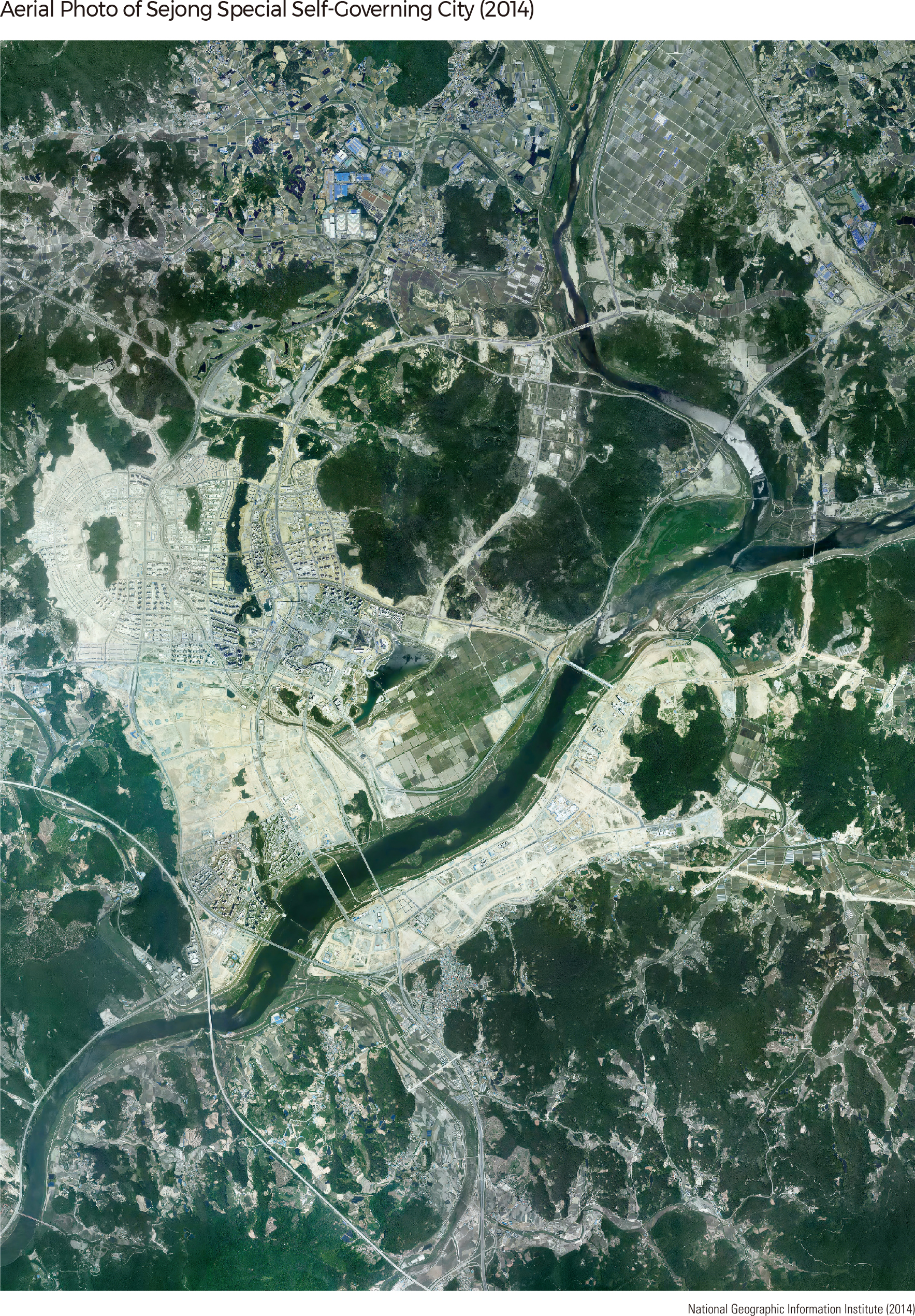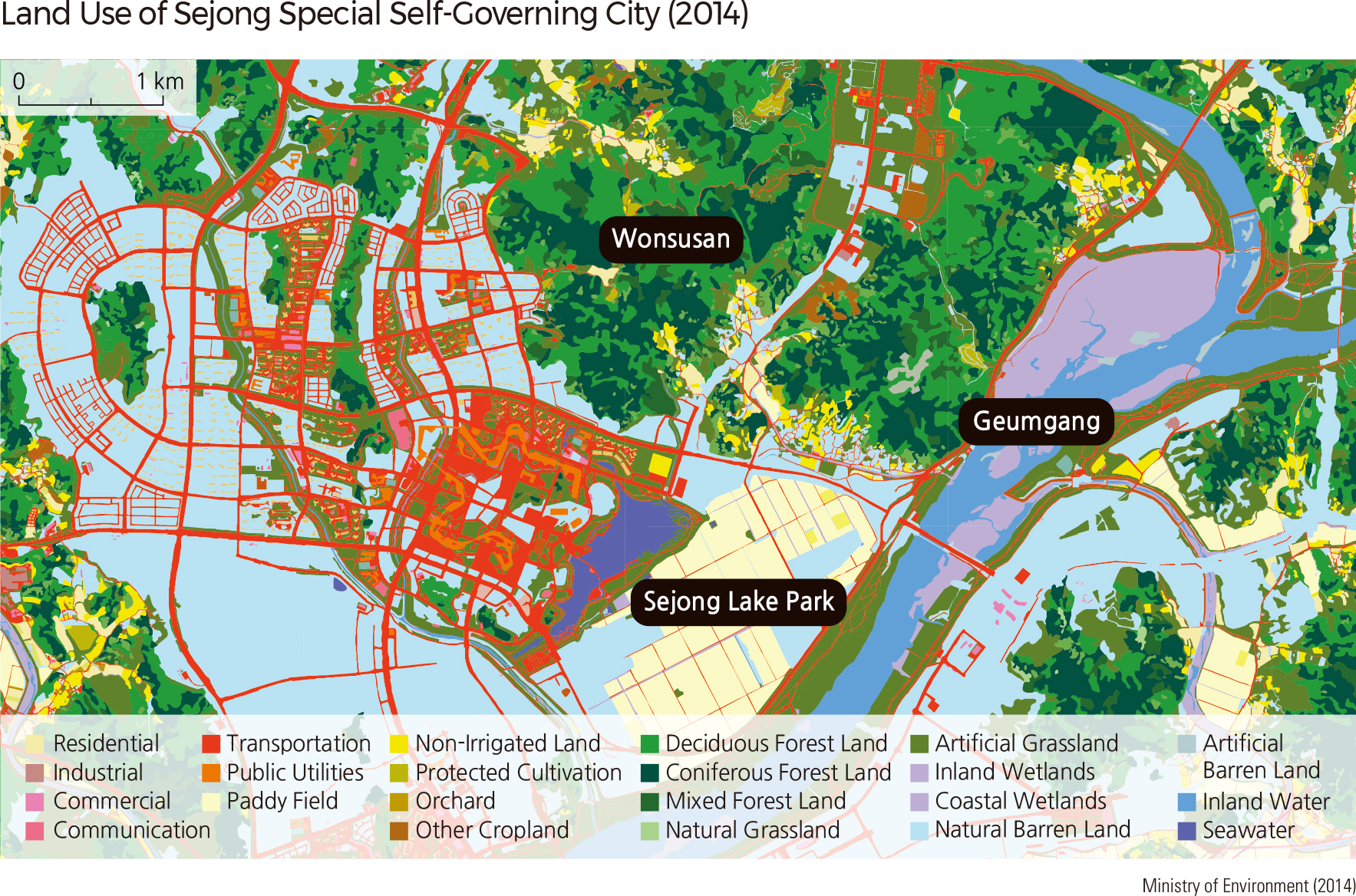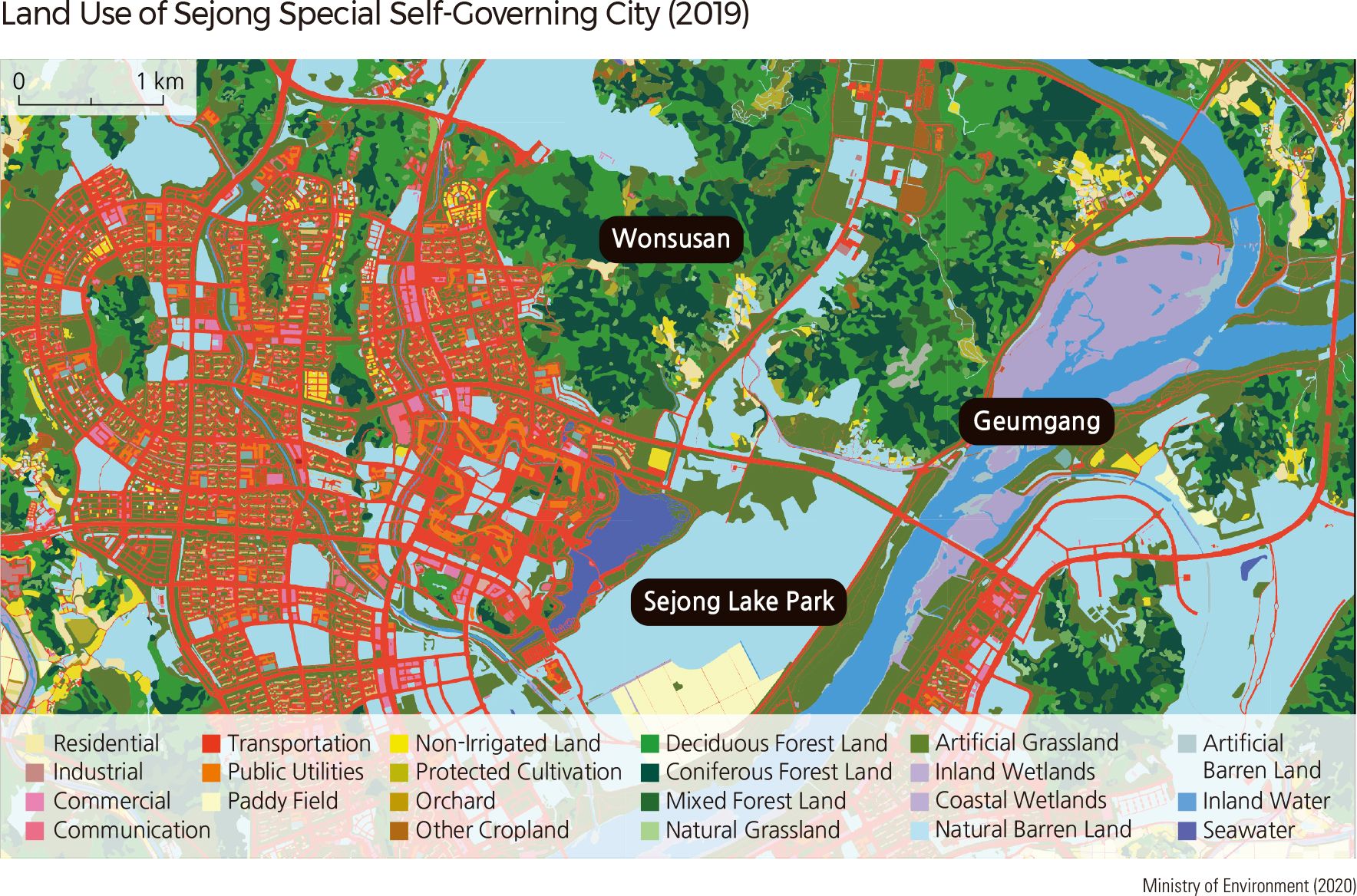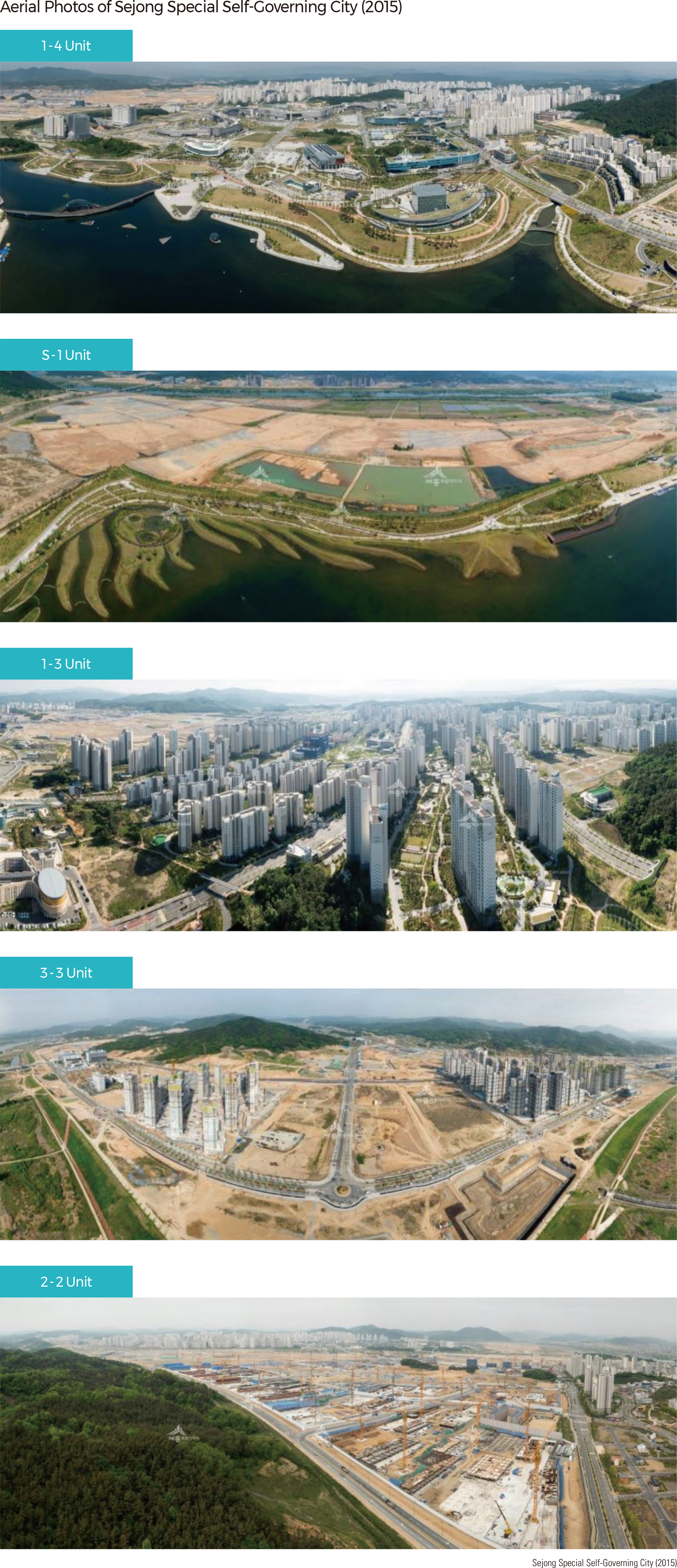English II 2020
Sejong Special Self-Governing City, more commonly known as Sejong-si, is an administrative city near Geumgang that covers an area of 72.91 ㎢. To balance national development and solve the overcrowding problem in Seoul, the city was conceptualized in 2003 and concrete measures began to take place in 2005. From 2007 to 2015, the peripheral areas of government buildings located northwest of Geumgang underwent intensive development, which involved drastic changes in land use as well as the landscape. For instance, many hills were converted into flatland and Sejong Lake — the largest man-made lake in South Korea — was created. However, extensive efforts are also being made to build Sejong-si as an environmentally friendly city. 52% of the planned development area has been designated for parks, green space, and water fronts, and a Green-Blue Network linking green corridors and stream corridors will be established. The government is also planning a wedge-shaped park system consisting of a central park connecting the green spaces of the city, and aims to reduce energy consumption by introducing a resource circulation system and promoting renewable energy. |




